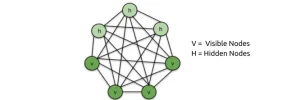In today’s competitive world of work, standing out requires not only technical skills but also strong interpersonal skills. Among these, the ability to work as a team occupies a privileged place. In many selection processes, it is valued as one of the most important soft skills. But what does it really mean to be a good team player? This is where the famous 5 Cs of teamwork come into play: communication, coordination, complementarity, trust and commitment.
Implementing these five concepts offers several advantages for both companies and employees. In this article, we analyze each of the Cs that make up teamwork and explain its advantages. Keep reading!

The 5 Cs of teamwork model
The idea of the 5 Cs came from management expert Tom Peters, who analyzed the behaviour of high-performance teams. As a result, he identified five characteristics that should not be missing to strengthen collaboration in a team: effective communication, synchronized coordination, complementarity of skills, mutual trust and shared commitment. Now we share the details with you.
Communication
Effective communication is a fundamental pillar within the 5C model of teamwork. It involves the ability to transmit ideas, information and feedback in a clear, precise and understandable way for all team members. Open and transparent communication fosters trust, which in turn improves collaboration and problem-solving. To do this, establish effective communication channels to share ideas and express opinions. We are talking about an environment in which team members feel valued and heard, and in which communication is a fluid process.
This first C of teamwork is the foundation of the other four: if communication doesn’t work, chances are nothing else will.
Coordination
If the entire team already knows the company’s communication channels, then it is necessary to organize efforts to navigate in a coordinated manner towards common objectives. In other words, synchronization of resources and activities is needed to optimize work and achieve shared goals. A piece of advice: make sure that the team has a clear direction and that each member knows their responsibilities, this way redundancies, conflicts and delays are avoided.
Complementarity
At this point, we focus on knowing the abilities and skills of the team. Complementarity implies the ability to take advantage of the individual strengths of each person to compensate for the weaknesses of others and achieve more solid and complete results. When creating the work plan and distributing responsibilities you have to take into account the diversity of knowledge and use it to foster the group’s ability to innovate and find creative solutions.
Trust
As we mentioned before, transparent and clear communication fosters trust among the team. This involves creating a safe work environment where everyone feels comfortable sharing ideas and even making mistakes without being criticized. Building trust translates into teams where it is normal to ask for help and competitiveness is replaced by collaboration. Remember that trust does not grow overnight, but must be built with patience through consistent actions, transparency and shared responsibility.
Commitment
Commitment implies a firm willingness on the part of each team member to actively contribute and give their best in achieving shared goals. When workers are engaged, they demonstrate their willingness to overcome obstacles and work together toward collective success, even in difficult or challenging times.
Benefits of the 5 C’s of teamwork
Surely by now you already have some clue about the benefits of implementing the 5 Cs to promote teamwork. Anyway, we summarize it for you:
- Improve team efficiency and productivity by facilitating clear and effective communication.
- It favours the coordination of efforts and resources, optimizing time and the results obtained.
- Enhance the diversity of skills and perspectives through complementarity between team members.
- Strengthens mutual trust, creating an environment of collaboration and support that drives collective performance.
- Fosters a shared commitment to team goals, promoting perseverance and overcoming challenges.
Also you can read about the following topics:





